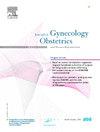Prevalence of polycystic ovarian syndrome in South Asian countries and 21 global regions with Sociodemographic index: A systematic analysis of the Global Burden of Disease (1990–2021)
IF 1.6
4区 医学
Q3 OBSTETRICS & GYNECOLOGY
Journal of gynecology obstetrics and human reproduction
Pub Date : 2025-08-27
DOI:10.1016/j.jogoh.2025.103019
引用次数: 0
Abstract
Background
This analysis examines both the prevalence and the disability-adjusted life years (DALYs) linked to polycystic ovary syndrome (PCOS) across South Asia and worldwide, drawing on data from the Global Burden of Disease (GBD) 1990–2021 study.
Methods
Data from GBD 2021 were analyzed using Joinpoint Regression to assess age-standardized prevalence rates (ASPR) and DALYs (ASDR). Sociodemographic index (SDI) was incorporated to evaluate the relationship between socioeconomic factors and PCOS burden. The analysis was conducted across 21 global regions, with Pearson's correlation assessing the association between SDI and PCOS outcomes.
Results
The prevalence of PCOS in South Asia increased significantly, with an average annual percentage change (AAPC) of 1.87 % (95 % CI: 1.85–1.88) from 1990 to 2021. India had the highest prevalence in 2021 (269.8 per 100,000), and the highest total percentage change (TPC) in prevalence (86.9 %). DALYs rate in India were similarly high (11.1 per 100,000. A positive correlation (r = 0.57, p < 0.001) between SDI and both prevalence and DALYs was observed.
Conclusion
PCOS prevalence and DALYs are rising across South Asia, with India experiencing the highest burden. Public health interventions should focus on improving awareness, diagnosis, and management, especially in lower SDI regions to mitigate the growing health challenge.
南亚国家和21个全球地区多囊卵巢综合征患病率与社会人口指数:全球疾病负担的系统分析(1990-2021)
背景:本分析利用1990-2021年全球疾病负担(GBD)研究的数据,研究了南亚和世界范围内与多囊卵巢综合征(PCOS)相关的患病率和残疾调整生命年(DALYs)。方法:采用关节点回归分析2021年GBD的数据,评估年龄标准化患病率(ASPR)和DALYs (ASDR)。采用社会人口指数(SDI)评价社会经济因素与PCOS负担的关系。该分析在全球21个地区进行,Pearson相关性评估SDI和PCOS结果之间的关系。结果:南亚地区PCOS患病率显著上升,1990 - 2021年平均年变化百分比(AAPC)为1.87% (95% CI: 1.85-1.88)。印度2021年的患病率最高(每10万人中有269.8人),患病率的总百分比变化(TPC)最高(86.9%)。印度的DALYs比率同样高(每10万人中有11.1人)。SDI与患病率和DALYs呈正相关(r = 0.57,p < 0.001)。结论:PCOS患病率和DALYs在南亚地区呈上升趋势,其中印度负担最重。公共卫生干预措施应侧重于提高认识、诊断和管理,特别是在低SDI地区,以减轻日益严重的健康挑战。
本文章由计算机程序翻译,如有差异,请以英文原文为准。
求助全文
约1分钟内获得全文
求助全文
来源期刊

Journal of gynecology obstetrics and human reproduction
Medicine-Obstetrics and Gynecology
CiteScore
3.70
自引率
5.30%
发文量
210
审稿时长
31 days
期刊介绍:
Formerly known as Journal de Gynécologie Obstétrique et Biologie de la Reproduction, Journal of Gynecology Obstetrics and Human Reproduction is the official Academic publication of the French College of Obstetricians and Gynecologists (Collège National des Gynécologues et Obstétriciens Français / CNGOF).
J Gynecol Obstet Hum Reprod publishes monthly, in English, research papers and techniques in the fields of Gynecology, Obstetrics, Neonatology and Human Reproduction: (guest) editorials, original articles, reviews, updates, technical notes, case reports, letters to the editor and guidelines.
Original works include clinical or laboratory investigations and clinical or equipment reports. Reviews include narrative reviews, systematic reviews and meta-analyses.
 求助内容:
求助内容: 应助结果提醒方式:
应助结果提醒方式:


